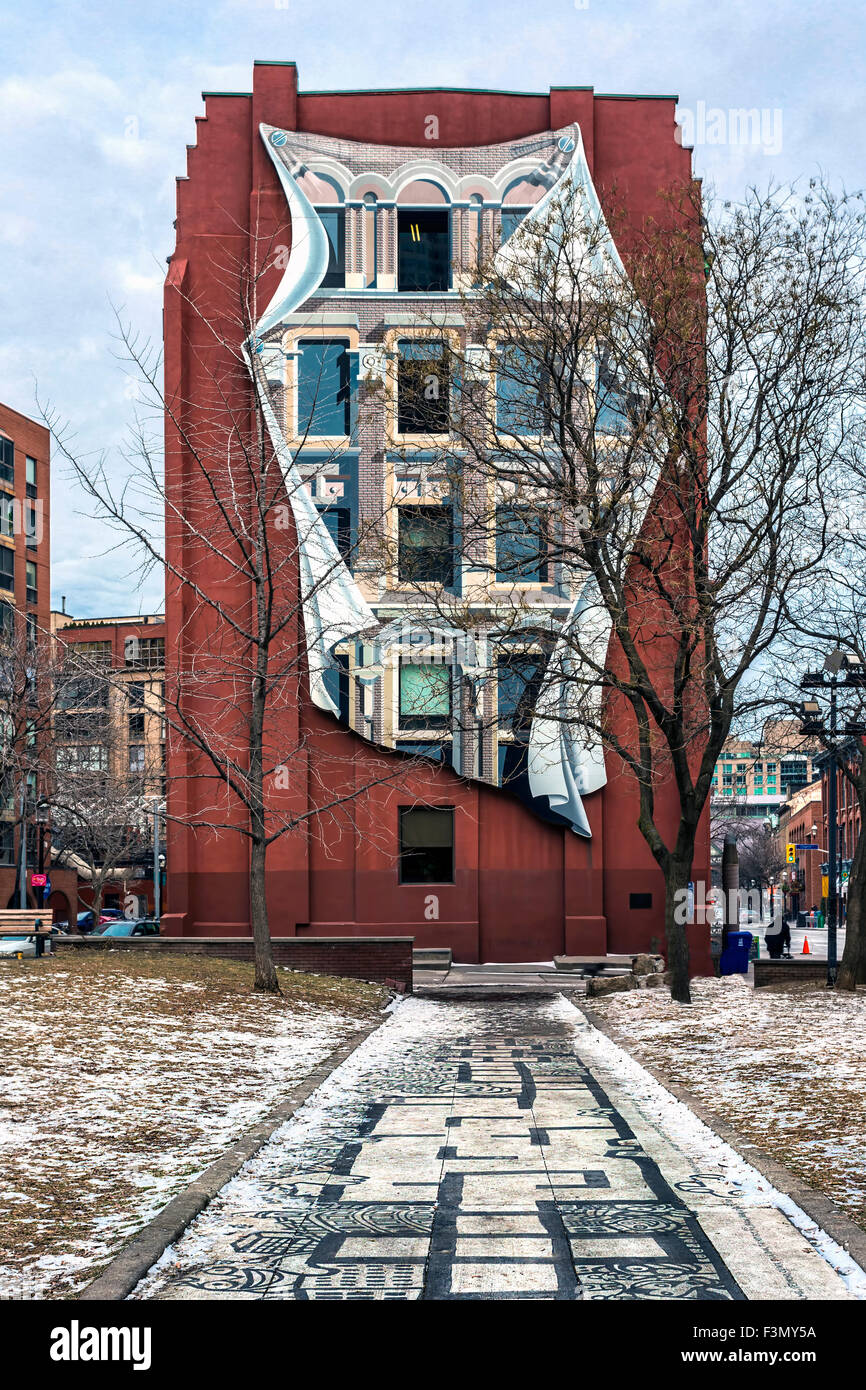Discover Gooderham Building Location: Full Details on Parking Tips and Local Happenings.: Seasonal Weather and Close-by Spots Can Make It Memorable.}
Discover Gooderham Building Location: Full Details on Parking Tips and Local Happenings.: Seasonal Weather and Close-by Spots Can Make It Memorable.}
Blog Article
Reveal the Rich Background Behind the Gooderham Building in Toronto
The Gooderham Structure, an exemplary manifestation of Richardsonian Romanesque architecture in Toronto, has a fabled past that expands beyond its striking red block façade. Commissioned by the prominent Gooderham and Worts distillery in 1891, this structure has played a pivotal function in forming the city landscape of the St. Lawrence Market area.

Origins of the Gooderham Structure
Constructing a long-term legacy, the Gooderham Building, additionally referred to as the Flatiron Building, arised as a sign of Toronto's architectural evolution in the late 19th century. The building's beginnings map back to 1891 when it was commissioned by the Gooderham and Worts distillery, one of copyright's largest distilling business. Created by engineer David Roberts Jr. Gooderham Building address., the framework was uniquely positioned at the crossway of Front and Wellington Streets, capitalizing on a triangular whole lot created by the merging of these thoroughfares
The structure's building and construction utilized neighborhood red block and terracotta, developing an unique visual that complemented the burgeoning cityscape. Originally intended to house the Gooderham and Worts offices, the structure stood for the prosperity of the distillery, which had ended up being a significant factor to Toronto's economic climate. Especially, the conclusion of the Gooderham Building synchronized with a period of rapid urbanization that characterized the era.
The establishment of this building treasure not just showcased innovative design however likewise prepared for future growths in Toronto. Today, it stands as a testament to the city's rich background and flexibility, proceeding to draw in visitors and admirers from around the world.
Architectural Value
The architectural importance of the Gooderham Building prolongs past its distinct flatiron form, mirroring the innovative spirit of late 19th-century style. Completed in 1892, the framework exhibits the Richardsonian Romanesque design, defined by its durable masonry, rounded arcs, and complex describing. The vibrant usage of contrasting materials, particularly the cozy red block and sedimentary rock accents, boosts its visual appeal and shows the craftsmanship of the age.
The structure's three-story style is notable for its unified percentages and stylish cornice, which contribute to its iconic silhouette versus the Toronto horizon. The narrow lot on which it stands postured special difficulties, yet the architects, in this instance, developed a framework that made the most of the offered room while maintaining visual equilibrium.
Additionally, the Gooderham Structure is a testimony to the flexibility of architectural layout in metropolitan environments. Its long-lasting presence among modern-day developments shows the worth of protecting historic architecture as a way of recognizing a city's past. Today, it remains a beloved site, reflecting both the architectural fads of its time and the developing narrative of Toronto as a dynamic metropolitan facility.
Role in Toronto's Growth
Becoming a vital gamer in Toronto's metropolitan landscape, the Gooderham Building contributed substantially to the city's growth during the late 19th century. Constructed in 1892, this famous building represented not just the architectural passions of the moment yet also the expanding financial landscape of Toronto. The structure was at first made to offer as a warehouse for the Gooderham and Worts distillery, which was among the biggest distilleries in the British Realm. Its tactical area at the junction of Front and Wellington Streets facilitated the motion of goods and services, highlighting the location's value in the city's business tasks.
As the city broadened, the Gooderham Structure came to be a vital element of the St. Lawrence Market area, which was a center of trade and commerce. Its unique architectural style and noticeable visibility drew interest, affecting the style of succeeding structures around. The building's survival through various economic changes and city growths shows the durability and adaptability of Toronto's historic landscape. In significance, the Gooderham Building is not just an architectural spots; it played a crucial duty in forming Toronto's identity and financial growth during a transformative period in its background.
Cultural Impact and Legacy
Gooderham Structure's distinct architectural design and historic relevance have actually left an enduring mark on Toronto's cultural landscape. As one of the city's most well-known sites, its distinct flatiron form and detailed brickwork exhibit the Victorian architectural patterns of the late 19th century. This structure not just acts as an aesthetic anchor in the St. Lawrence community however likewise embodies the link spirit of a burgeoning city throughout an age of economic development.
The building has actually ended up being a symbol of Toronto's rich history, motivating neighborhood musicians and professional photographers that look for to capture its appeal. Its visibility has cultivated a sense of community identification, adding to the story of urban advancement. Moreover, the Gooderham Building has played a crucial function in the tourism field, bring in site visitors eager to discover its fabled past and architectural appeal.
Along with its aesthetic charm, the structure encapsulates a story of resilience and adjustment, as it has actually transitioned with numerous usages over the decades - Gooderham Building address. Thus, the Gooderham Building stands not only as a monument of building value however additionally as a testament to the progressing social heritage of Toronto

Reconstruction and Conservation Efforts
Numerous restoration and conservation initiatives have been undertaken to make certain the Gooderham Structure stays an important part of Toronto's architectural heritage. Initially completed in 1892, the structure has actually gone through considerable remodellings to address architectural worries while preserving its historic stability. The most notable reconstruction occurred in the late 20th century when the structure was thoroughly refurbished to meet modern-day security criteria without compromising its initial design elements.
These initiatives consisted of repairing the unique red-brick façade, restoring the famous triangular shape, and preserving the detailed stonework information. Additionally, the building's inside has seen mindful updates that appreciate its historical value, making sure that original attributes such as wooden beams and ornamental moldings are kept.
The Gooderham Building is currently safeguarded as a designated heritage building under the Ontario Heritage Act, which helps secure it from inappropriate alterations. Neighborhood interaction has played an essential function in these preservation efforts, with neighborhood advocacy teams increasing awareness concerning the structure's historical importance. As a result, the Gooderham Structure stands not only as a functional room yet also as a testament to Toronto's rich building background and withstanding social heritage.
Conclusion

Please visit one of our local supporters - Gamerama And The Repair Store - Iphone Repair Toronto
Report this page